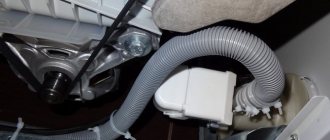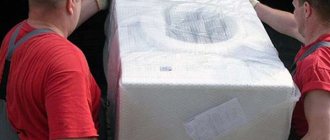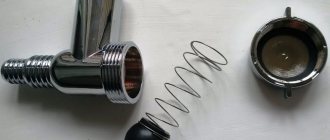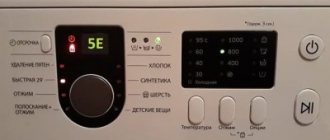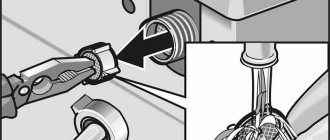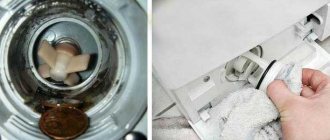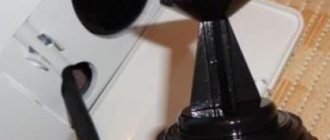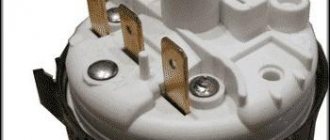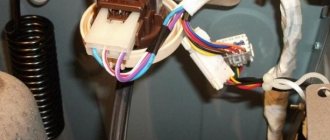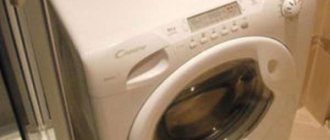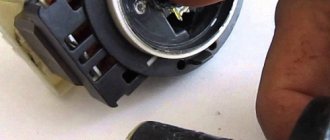Varieties
Before you begin lengthening, you need to familiarize yourself with the main types of hoses.
Jellied
The inlet hose is a device used to connect the washing machine to the water supply system. It is with its help that water is supplied to the internal elements of the system. Such products operate under high pressure conditions and therefore reinforcement technology is used in their manufacture.
The main material from which the filler tubes are made is polyvinyl chloride, the surface of which is covered with nylon.
The connecting components of the structure can be made of steel, aluminum or plastic. Budget models use plastic fittings that are unscrewed and screwed on manually, without the use of additional tools. When working with steel or aluminum products, you will have to use a special wrench.
Drain
A drain hose is used to drain liquid from washing equipment. The following types of drain tubes are distinguished:
- Standard. Such products are produced in a certain length, the length of which can reach five meters.
- Telescopic. These are corrugated products that can easily be stretched to the desired length. When connecting telescopic tubes, you must be very careful so that they do not bend. The kinks may burst under strong pressure.
- Polypropylene. They are made from durable polypropylene. At each end of the product there are special fittings with which a device for washing clothes is connected.
See also
How to disassemble and repair a dishwasher with your own hands, instructions
Carrying out the procedure
First of all, you should make sure in advance that you have all the necessary parts in stock. This list includes:
- extension hose;
- special connector;
- clamps for fastening;
- screwdriver and other necessary tools.
First you need to put clamps on the ends of both hoses, then insert the end of the one that is connected to the washing machine into the connector on one side. The new hose is secured on the other side, now carefully tighten the clamp with a screwdriver. Fixing is not difficult, you just need to make sure that it does not slip off the connector.
After the process is completed, the machine can be connected to the sewer, and then the operation can be tested during washing. When the machine drains the water, see if the connection area leaks. This problem usually occurs if the ends are poorly secured and water seeps through the holes, but it is quite possible to prevent it at the work stage.
We suggest you familiarize yourself with How to remove hair dye from your face
If you don’t want to waste time and lengthen the drain hose by removing the old one, this method will be the most convenient option and is suitable even for those who have never performed such a procedure. Proper organization of water drainage is the key to your peace of mind. This will help avoid water leaks from under the machine and unpleasant odors caused by stagnation or drawing in liquid from the sewer system.
Purpose and features of the connection
Before you start extending the drain hose, you need to become familiar with its main purpose and the features of its connection. This design is used to drain water from washing equipment into the sewer system. The efficiency of draining liquid depends not only on the integrity of the structure, but also on the characteristics of its connection to the sewerage system and the washing machine. To connect the tubes, connecting elements - fittings - are used. They are installed on the hose and ensure its secure fastening.
For additional fixation, use a special rubberized or metal coupling. It is installed to the pipe responsible for removing liquid.
Repair and cleaning of the filler pipe
The pipe is located directly under the body of the washing machine, so it must first be disassembled.
A certain sequence must be followed here. How to remove red wine stains
You need to make sure that the flow of water into the machine is blocked. Next, the washing machine should be disconnected from the electricity. The compartment for receiving powder is removed. The garbage filter is removed. Place the washing machine on a prepared blanket or rag on a free area of the floor. The machine should be carefully placed on the side wall.
If there is water in the machine, it should be removed. If this is not done, you may damage the control module of the washing machine. Next, having removed the top cover of the machine using a screwdriver, you can see in the upper left corner a rubber pipe that comes from the water inlet. Using pliers, carefully, trying not to damage them, since they will be attached back, you should unclench and move the clamps that hold it towards the middle of the pipe. Next, remove the filler pipe and determine its condition. If there are blockages, they need to be removed; if damage is observed, a new suitable pipe should be purchased.
The quality of washing directly depends on the components of the washing machine and proper care of them. If, due to a breakdown, it was necessary to replace or repair any parts, you should approach the solution of the problems that have arisen with all seriousness, and if you purchase new components, do not skimp and opt for higher quality materials.
How to properly extend a drain hose
There are three ways to lengthen the drain tube, which you should familiarize yourself with in advance.
With connector
This is a common way to extend drain tubes. To use this technique, you must first purchase a connector with clamps that will ensure a tight connection. To extend the drain structure, perform the following steps:
- Install the tube on both sides into the connector. They must be installed very carefully so that they fit tightly to the surface of the connecting element.
- Secure the clamps. If the connection point is not airtight enough, the products should be additionally secured using metal clamps.
- Connect the extended structure to the washing machine and sewer pipe. The connection points are also fixed with clamps.
- To inspect. When everything is connected, the system is checked to identify possible leaks.
If there is no connector
Some people do not have the opportunity to purchase a connecting element. Instead, you can use an ordinary plastic or rubber tube. The size of the pipe must match the diameter of the hoses that will be connected to it. Too large or small tubes should not be used, as this will negatively affect the tightness of the connection.
The hoses are put on the tube so that after connection they converge in the central part. If the elements are not connected very tightly, you will have to fasten them with clamps.
See also
How to properly glue a plinth to a suspended ceiling, the best methods of fastening
Other options
There are other options for connecting washing machines without extension. If it is not possible to purchase a special extension cord, you will have to install the washing equipment closer to the sewer system. You can also bring the drain itself a little closer so that you do not have to lengthen the drain tube.
Types of hoses
The hose for a washing machine is a tube with plastic nuts and fittings and has markings that contain information about the operating pressure and temperature.
One part of it is connected to the water supply, and the second directly to the washing machine itself. Conscientious manufacturers install pressed metal sleeves at the junction of the fitting and the pipe. The channels for pouring water into the washing machine are:
- fixed length, which ranges from 1 to 5 meters;
- in a bay up to 10 meters long;
- telescopic, increasing in size, with a built-in Aquastop system, which can protect the bathroom from flooding.
How to easily clean a washing machine with citric acid
The inlet hose with the Aquastop system is recognized as the best of its kind , since it can withstand a water pressure of 70 when filling and has a unique system for shutting off the water supply in the event of a duct rupture.
It is worth noting that the length of the filling branch should not be more than 3 meters. It is possible to connect the filler duct in front of the mixer or install it by screwing it onto the float valve of the toilet flush cistern. For these two options, you can find special components in plumbing departments that make it easier to connect the washing machine inlet hose.
Extending the inlet hose
Sometimes it becomes necessary to lengthen not only the drain hose, but also the inlet hose. To do this, you will have to purchase in advance an additional tube about 50-60 centimeters long and a nipple made of brass.
Before carrying out work, the washing machine is disconnected from the source of electricity, after which the old inlet hose is removed. The nipple is then used as a connector for the old and new filler product. If, after switching on, water leaks at the connections, you will have to strengthen them with clamps.
Tube extension without adapter
If there are difficulties in selecting an extension cord, the drain hose can be extended without it. You should find a suitable rubber or plastic tube. You will also definitely need clamps.
Washing machine drain hose Installation
How to achieve the desired dimensions of the drain hose:
- First put on the clamps.
- Place the used tube onto the hoses so that they can connect in the center. The tube should fit very tightly.
- Secure the parts with clamps.
In order for the device to perform its functions normally, the extended hose for the washing machine should not exceed 3.5 m in length.
Connection to sewerage
It is no secret that before using a washing machine, it must first be connected to the sewer system. The following methods for connecting the drain pipe are used:
- Attaching a drain to the edge of a bathtub or regular toilet.
- Connecting the washing machine drainage system to the washbasin siphon.
- Connecting the drain pipe to the sewer system using a separate siphon.
- Direct connection of the drain structure to the sewer pipe.
The last method is considered the simplest, since there is no need to connect the hose to additional siphons.
How to prevent clogging of the drain system
The easiest way to fix a problem is to prevent it from happening. Therefore, before loading the laundry, do a detailed inspection of all items. Remove small parts from pockets, you can shake the item out. Fasten all zippers and tie laces.
Some of the reasons for clogging:
- the machine turns off when switching to “spin”;
- does not rinse completely.
- the program crashed;
- Water drainage has decreased in speed.
The appearance of a clog in a washing machine often becomes an unexpected occurrence for users.
The prevention method is to equip it with a filter. It can be attached to the hose before installing the structure. Be sure to take the time once a month to inspect the condition of the drain.
The advantages of rubber hoses are their low cost and wide consumer availability.
What malfunctions can cause defects in the drain hose?
For example, the Electrolux washing machine does not drain water. You can blame internal damage, but still the drain hose is often simply crushed. Remove the bend and the water will begin to drain again.
A clog in the hose also often causes such a breakdown. By the way, the drain pump often becomes clogged. Once coins or buttons get in there, the hose “refuses” to be removed. The conclusion is simple: check things before loading them into the drum, and check them carefully. And one more piece of advice: if the hose does not drain, the machine has stopped literally in the middle of washing, the water must be drained.
If no troubleshooting methods help, apparently, the problem is not only in the hose. Or it is not connected correctly. Then, of course, it is better to call a service team.
Trouble-free washing to you!
We connect the washing machine and dishwasher to the water supply system
Connecting a washing machine and dishwasher. November 23, 2006 Nowadays, a dishwasher and washing machine can be seen in almost any kitchen or utility room. They are made in standard sizes to suit the decor of the room and fit neatly under tables, in cabinets, etc. They are connected using flexible pipes - hoses - to a special or general kitchen sewer pipe or sink drain in the room where they are installed.
Automatic machines must be provided with a constant supply and drainage of water. Dishwashers require only cold water, but washing machines can have both cold and hot water. Hot water washing machines are faster and may also be more economical depending on how you heat the water.
Water pressure The instructions for the machine must indicate the operating water pressure. Hinge without mortise. If the machine is installed on an upper floor, it is necessary to check whether the height difference with the storage tank will provide the required pressure. On the lower level, pressure problems are rare, especially if cold water is supplied from the sink supply pipe.
However, consult a specialist when installing two or more machines. Rice. 1 Washing machine connection: Inlet pipe 15 mm (half inch) Machine valve PVC inlet hoses Water inlet Drain hose Water intake pipe Siphon Drain pipe 40 mm (one and a half inch) to the sewer Water inlet Washing machines and dishwashers are supplied with PVC hoses that connect the inlet water at the back of the car with special small-sized valves (valves) connected to the water supply system of the house.
Draining water from the washing machine. After connecting the washing machine to the water supply, we proceed to connecting the drain hose to the sewer. The washing machine is equipped with a drain hose, which, as the name suggests, drains the used water from the machine into the sewer. The drain hose at the end has a plastic tube onto which you need to put a reduction, the outer diameter of which corresponds to the diameter of the sewer socket.
A reduction can be said to be a rubber coupling with which you can connect pipes of different diameters, and in our case it is a thin tube at the end of the drain hose and a thick socket of the sewer pipe. The reduction will protect you from the leakage of used water from an overflowing sewer pipe, and of course from the odors emanating from the same pipes.
When connecting the drain hose, you can also use the pipe socket used. As in the case of the intake hose, you can put a tee on the socket used, which will allow you to connect the drain hose to the sewer. The drain hose can also be extended using a coupling and an additional hose.
The final touch in connecting an automatic washing machine will be connecting it to the power supply. There is nothing complicated here since the machine is equipped with a wire and a plug that just needs to be plugged into a socket. But the main requirement for the outlet will be the presence of a grounding contact, that is, the washing machine must be grounded.
Well, that’s all, after all the above, we can say your washing machine is ready for use, but you really still need to level it. The level of noise emitted by this miracle piece of equipment and its level of vibration will depend on how level your washing machine is installed. You can level the machine using its four legs, which are made in the form of bolts, with a plastic sole at the junction with the floor.
Well, that’s all, you’ve done it and now you can calmly wish you a pleasant wash.
We connect the washing machine and dishwasher to the water supply system. Well-made water supply and drainage are not only important elements necessary for the proper operation of the washing machine or dishwasher, but also a guarantee of their safe operation. Water and sewer connections can be made behind the washing (dishwasher) machine or next to it.
We suggest you familiarize yourself with How to plant Guzmania at home
This should be done in such a way that they are easily accessible, allowing all necessary operations to be carried out during operation and maintenance of the equipment. The aesthetic appearance of the connections also plays an important role. What kind of water? Washing machines and dishwashers usually only supply cold water, although some models can also supply warm water (the temperature of which does not exceed 60°C).
Equipment supplied with warm water will use less electricity during the cycle (it will heat the water faster), but be aware that you will have to pay more for the warm water used (customers who pay for warm water off the meter , it may be cheaper). Attention!
Some experts do not recommend using warm water. They claim that washing and washing dishes in equipment supplied with warm water is less effective (proteins coagulate quickly in warm water). The supplied water must meet the requirements for drinking water (especially the content of iron and manganese salts, as well as hardness salts).
Therefore, the water must be prepared and, if necessary, filters must be installed that match the type of contamination in the loop without insertion. Filters that soften water are also available for sale. Their installation in front of the washing machine increases washing efficiency, reduces detergent consumption and protects equipment from scale.
But before installing such a filter, you must consult with the equipment manufacturer or employees of an authorized service point. The water flow in the system should be approximately 10-15 liters per minute. Before connecting the equipment, you need to check whether the pressure in the home system is compatible with the required pressure indicated in the documentation for the equipment.
It can range from 1 to 10 bar (0.1-1.0 MPa). 1 The free end of the hose, through which water is supplied to the washing machine, is put on the fitting and crimped with a clamp. 2. or using a union nut, it is connected to the thread of a special tap for connecting washing (dishwashers) machines. 3 The external siphon for washing machines is mounted on the wall and connected to the sewer system.
4 Hidden siphons can be combined into one with a water connection unit. 5. and even with a splash-proof electrical outlet Water supply To the place where the washing machine should be located, it is necessary to lay a water supply pipe, and at its end install a shut-off valve with a hose fitting or a special tap for connecting washing machines and dishwashers.
Ball valves or valves with ceramic heads are convenient and reliable to use. A hose (included with the washing machine or dishwasher) is connected to the tap, through which water is supplied to it. To protect equipment from mechanical impurities in the water supply, you need to install a filter - a plastic gasket with a metal or plastic mesh, which is inserted into the union nut of the hose.
In some washing machine models, the filter is installed by the manufacturer, while in others it is included as equipment. The water supply hose must be laid without kinks or kinks, away from sharp edges and high-temperature elements, so that it cannot be damaged during operation of the washing machine (dishwasher).
You should not shorten it yourself, much less lengthen it. If it is the wrong length, it is better to replace it with door hinges without mortise installation. Modern washing (dishwashers) machines are usually equipped with a check valve or a special system - Waterstop, which prevents water from returning to the water supply system through the intake hose. Attention!
If the device manufacturer recommends installing a check valve on the water supply system, you should listen to the recommendations. Draining used water The drain hose of a washing machine or dishwasher is connected to sewer lines located next to sanitary fixtures or directly connected to the sewer system.
The diameter of the sewer pipe to which the water drain is connected should not be less than 40 mm. If a connection of this diameter is longer than 3 m, it must be provided with additional ventilation, for example by installing an aeration valve. The water drain from the washing machine should be high enough from the floor.
In the operating instructions for each equipment model, this height is determined individually. Most often it is in the range of 55-90 cm. Attention! The end of the drain hose should always be above the maximum water level in the washing machine. Otherwise, water will always flow into the sewer through the switched off pump and drain hose, and the washing machine will continue to collect and heat it up.
In such a situation, the water may not even reach the set temperature, and electricity is wasted. Water can be drained by inserting the end of the drain hose directly into the sewer pipe with a rubber collar that is smaller than the outer diameter of the hose. The limit switch should not reach the level of the drains in the sewer.
To connect a washing machine or dishwasher, the most suitable solution would be to install a special siphon on the sewer system: • external; • hidden, integrated with a water connection fitting and a separate tap; • hidden, integrated with the water connection fitting, having a built-in tap;
• hidden, integrated with a splash-proof electrical outlet and water connection fitting, with a built-in tap. Connection to the water supply and sewer system and operation of devices must always comply with the manufacturer’s recommendations, which are contained in the instructions attached to them.
CAUTION WITH ELECTRICITY! Electrical sockets for connecting a washing machine or dishwasher can be installed: • in the kitchen - at a distance of at least 60 cm from the water point; for aesthetic reasons, you can place them under the kitchen countertop; • in the bathroom: at a distance of at least 60 cm from the water point.
Sockets must be splash-proof (protected from water splashes by a lift-up cover). In addition, they must have a protective earth contact and be connected via a residual current switch. The distance from electrical cables to sewer or water pipes must be at least 50 mm.
We suggest you familiarize yourself with Soda against odor in shoes
Without scratching the walls and redoing the system Water supply If you need to connect water to the washing machine in the bathroom or kitchen and at the same time avoid the need to break the tiles and redo the system, you can connect the faucet via extension cords: one with a tap and a tap to which the hose is connected, supplying water to the equipment, the second is a simple pipe.
To do this, you need to dismantle the mixer, install extension cords, and then install the mixer again. Unfortunately, the water supply made in this way will be noticeable. 1 An extension cord with a branch and a tap for connecting a washing machine (dishwasher) must be installed on the cold water supply pipe. 2.
extension pipe (without tap) - to the hot water pipe. 3 The location of the drain hose on the edge of the toilet is dangerous. Hot water, with a temperature of up to 95°C, pouring into the toilet during washing can lead to serious burns to the person using the toilet, as well as cracking of the toilet itself.
4 Siphons of a sink, washbasin or bathtub can be equipped with a fitting for connecting the drain hose of a washing machine. Draining the water The simplest, but most dangerous, is a refrigerator with a glass door. The easiest way to remove dirty water from your washing machine or dishwasher is to place the drain hose directly into the sink, bathtub, sink, or under a closed toilet lid.
The end of the hose is hung on the edge of the sanitary fixture using a profiled elbow. This edge must be higher than the water level in the equipment. A bent drain hose falling off the edge of a sanitary appliance during the washing process is the most common cause of flooding in a room.
Through a siphon - for example, a washbasin or sink. Draining the water is possible after installing a special siphon with a fitting for connecting a hose from a washing machine or dishwasher. The disadvantage of this solution is the possibility of foam penetrating through the drain grate into the washbasin or sink bowl, as well as the occurrence of unpleasant squelching sounds in the siphon.
The advantage is the systematic cleaning of the siphon with a stream of hot water flowing under pressure from a washing machine or dishwasher. If the diameter of the drain channel is small (for example, 32 instead of 50 mm) and the length is large, difficulties may arise with the correct drainage of water from the equipment, and noisy suction of water may occur from the siphons of individual sanitary appliances that have a common sewer connection to the riser.
How to extend the drain hose?
Step-by-step instruction:
1. Place a clamp on the end switch, then attach it to one side of the fitting.
2. Do the same on the side of the extension cord.
3. Tighten the clamps.
4. Attach the extension to the sewer pipe or drain siphon.
5. Start test mode.
See how simple it is? Shopping took longer than the process itself. This trick can also be done from the side of the inlet hose if the water pipe is located far enough away.
